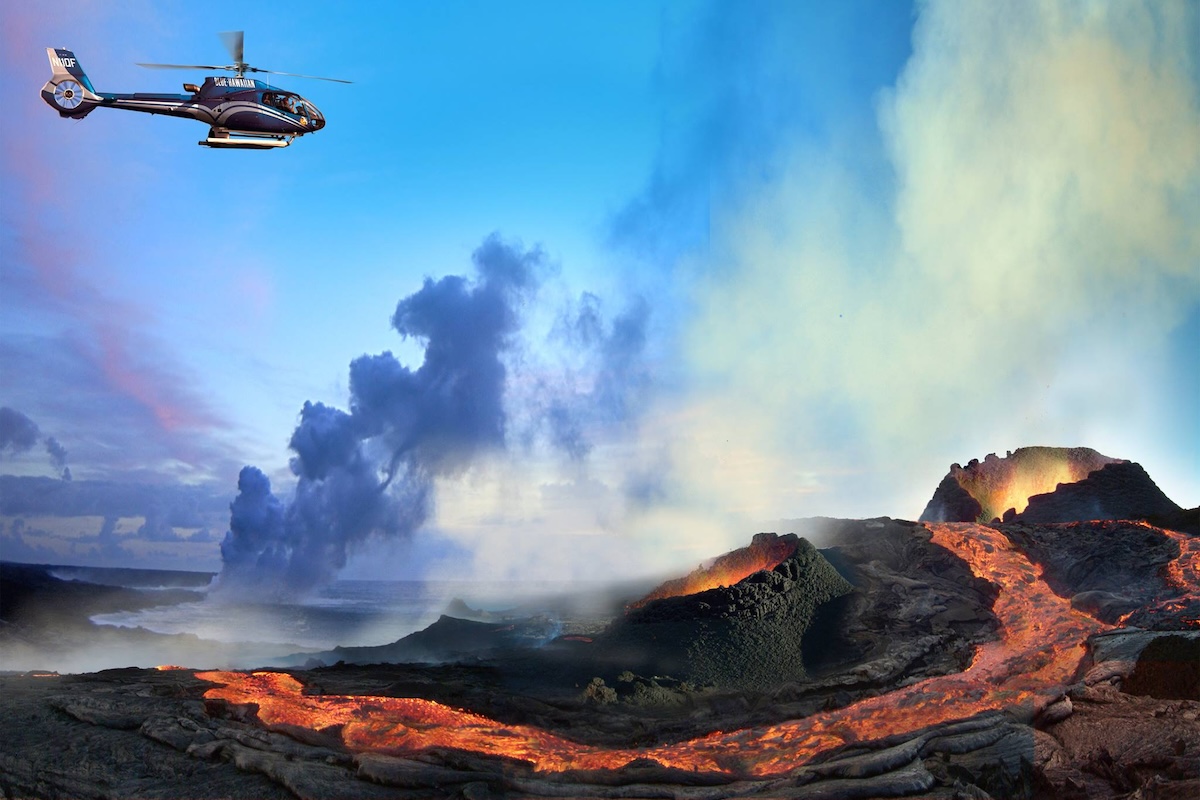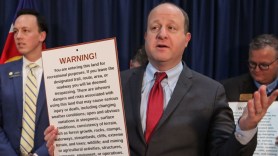

A helicopter tour company raised concerns about a new air tour management plan (ATMP) for Hawaii Volcanoes National Park, saying that the plan will significantly reduce flights and how air tourism businesses operate in the area.
Videos by Outdoors with Bear Grylls
With the plan, the National Park Service (NPS) and the Federal Aviation Administration (FAA) will cut the number of air tours allowed per year from 11,300 to 1,548, restrict flight plans to three specific routes, and limit tours to business hours four to five days a week.
Quentin Koch, president of Blue Hawaiian Helicopters, called the 91% reduction in flights “a little bit more draconian than they need to be,” during an interview with KHON2. While the purpose of the plan is to reduce noise in populated areas and protect public land, Koch said the plan takes away the pilots’ discretion.
“Our pilots know the parks the best. They know how to do the least amount of impact,” Koch said, adding that he’d rather the Parks Service and the FAA work with air tour operators to improve the already-in-place volunteer plan.
However, Rhonda Loh, superintendent of Hawaii Volcanoes National Park, explained that the details of the plan were “more than 20 years in the making” and that it was designed to “protect the natural and cultural resources, the wilderness character and general visitor experience.”
The Hawaii Volcanoes’ ATMP is just the latest in an ongoing debate over the Air Tour Act, a 2000 law that authorizes NPS and the FAA to create plans for regulating helicopter tours through national parks.
The source of contention isn’t so much that ATMPs exist, but rather how the plans are created. Although the public is invited to comment on the plans before they’re implemented, critics say the federal government can create them without consulting or receiving input from stakeholders, i.e., the companies that operate helicopter tours.
During a Congressional hearing last month, Arizona Rep. Paul Gosar argued that sweeping ATMPs result in a long list of issues, ranging from a loss of economic activity to limiting accessibility to public lands.
Another issue critics raise is just how long it’s taken the federal government to take action. Since the law was enacted, the Parks Service has rolled out 19 plans and voluntary agreements. However, 17 of those plans were the result of a 2020 court order forcing the federal government to comply with the law.
Ray Sauvajot, the associate director of the Natural Resource Stewardship and Science for the Parks Service, defended the 20-year timeline at last month’s hearing. He described the research process for determining the environmental and cultural impact of helicopters as a complex endeavor. He also identified noise as a significant concern for park visitors as well as being potentially harmful to wildlife and natural landscapes.
The Hawaii Volcanoes National Park ATMP is scheduled to go into effect by the end of June 2024.










It is about time these tours are restricted. There are many areas in Hawai’i including Volcano National Park that have been like war zones due to constant noise of helicopters. It is horrible to be out in a pristine area and have a helicopter buzzing overhead. These tours shatter the experience of watching a volcanic eruption or hiking along the Napali coastline or in our rapidly disappearing native forests.